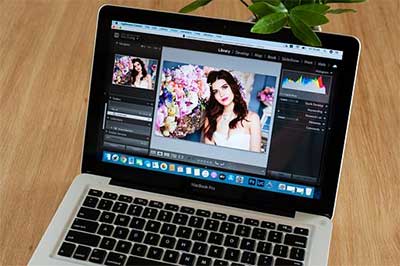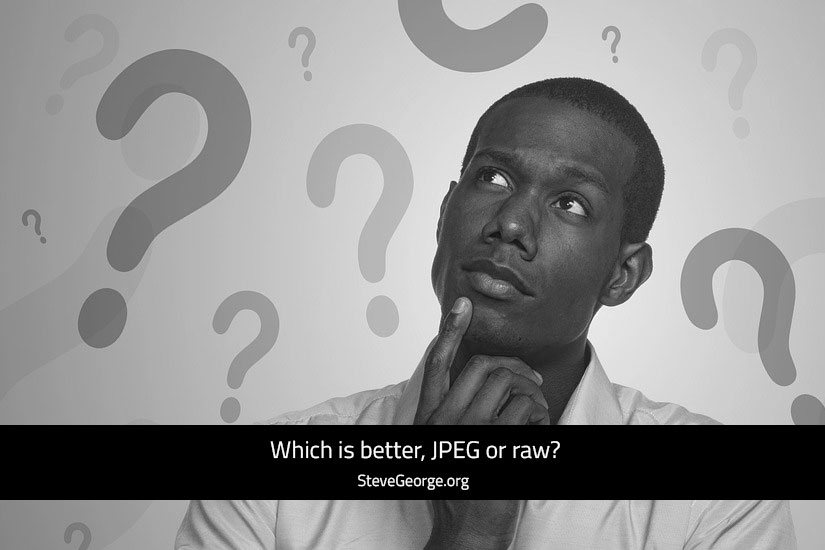“Which is better, JPEG or raw?” And “which one should I use?” are two of the most common questions asked by beginning photographers.
So, let’s find out!
For the sake of transparency
For simplicity’s sake, I’ll answer these questions in basic terms. I’m sure there are people who will argue that my explanations have holes, and they’d be right. But, keeping it simple hopefully means it’s easier to understand.
And, as a beginning photographer, the science of the processes are irrelevant.
So, with that little disclaimer out of the way, let’s get started 🙂
What is a raw image?
So, when you take a photo with your camera, the camera’s sensor records all the light it receives, into a data file. This ‘raw’ data is where the name raw image comes from.
You’ll often see raw written in capital letters, as though it’s an anagram for something. It isn’t.
The raw image is a record of the information picked up by the sensor, when you pressed the shutter button.
A raw files is always larger than the equivalent JPEG, and always needs some form of post-processing.
Its biggest benefit, is that some cameras can collect the information to record trillions of different colours. All these colours can be changed in post processing.
The average camera raw file is 12-bits per colour channel, or 36 bits total. (12 each for red, green and blue). That equates to 4096 shades for each colour.
These combine, to make an image containing a possible 68.7 BILLION different colours! Some cameras add an alpha (transparency) channel, which makes it 16 bits, or 48 bits total, giving trillions of different shades of colour.
If you’d like to find out more about ‘raw’, this explanation is pretty good.
What is a JPEG image?
JPEG files are 8 bits, or 256 shades per colour, or around 16 million colours total. Although that still seems like a lot of colours it makes a big difference when you’re editing your photos.
To start with, these images are processed right within the camera. The camera decides what the image should look like, then removes all the information it decides isn’t necessary.
In most cases, the end result is a properly exposed, totally acceptable image. But, the issues can start if you want to change the image too much in post.
Remember I said that a raw image has over 68 billion colours to choose from in post processing? Well, when you have a JPEG image, the camera has deleted over 68,500,000,000 colour options.
So, when you try to adjust any colours, tones, or shaded areas, you can end up with banding if you try to make too big a change. This is simply because the colours you need to make a smooth transition are not there any more.
So, which is better, JPEG or raw?
That’s not as simple as it sounds. As with just about everything in photography, there’s always a compromise to be made. So, simply asking which of JPEG or raw is better, isn’t a completely fair question.
 Raw files give you the best quality image after post processing, but the original file size can be huge.
Raw files give you the best quality image after post processing, but the original file size can be huge.
Also, because raw files are just data, the recorded colours are usually muted and bland. They don’t usually have much contrast and they always need to be processed.
JPEGs are much smaller and they’ve already been adjusted to give a good quality picture. With almost all cameras today, the question of JPEG or raw isn’t a question of quality. It’s more about what you want to do with the image afterward.
So, what type of photographer are you?
Do you like to manipulate every image, to produce photos that create a certain style, for example?
If that’s the case, then raw is probably the best way to go.
Or, are you happy with the images produced by your camera’s software? If you are, then by all means stick with JPEGs.
Conclusion
Everyone will have different needs from their photography. And in my opinion, it’s not a case of one being a better option.
I know professional portrait photographers who only shoot in JPEG. And I know landscape photographers who only shoot raw.
I usually shoot JPEGs, because I try not to spend too much time doing post processing.
Most enthusiast cameras today, will let you shoot raw and JPEG simultaneously. Why not try that for a while and see which works for you?
As usual, if you’ve got any questions, drop them in the comments below.
Until next time, stay sharp!


